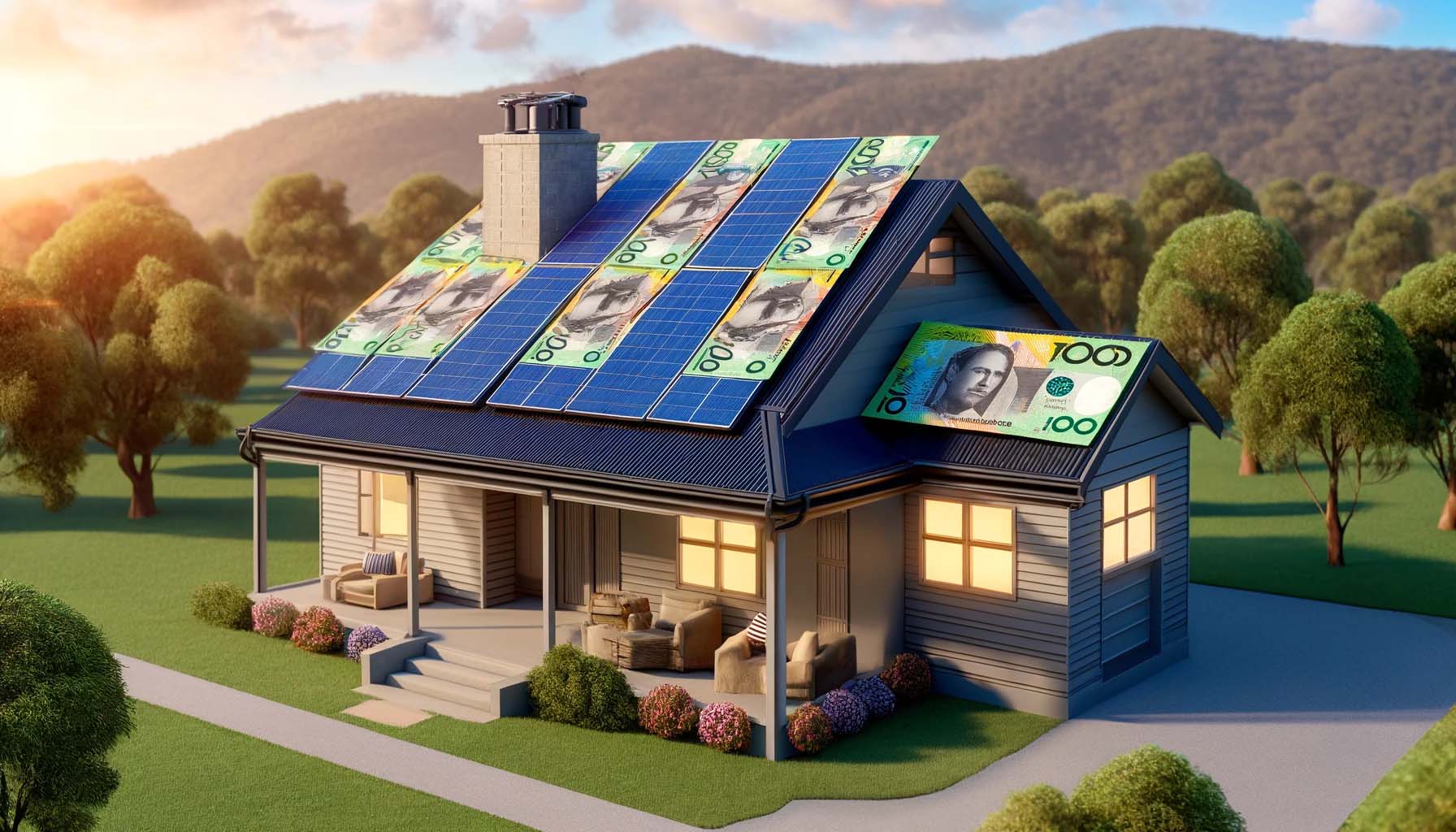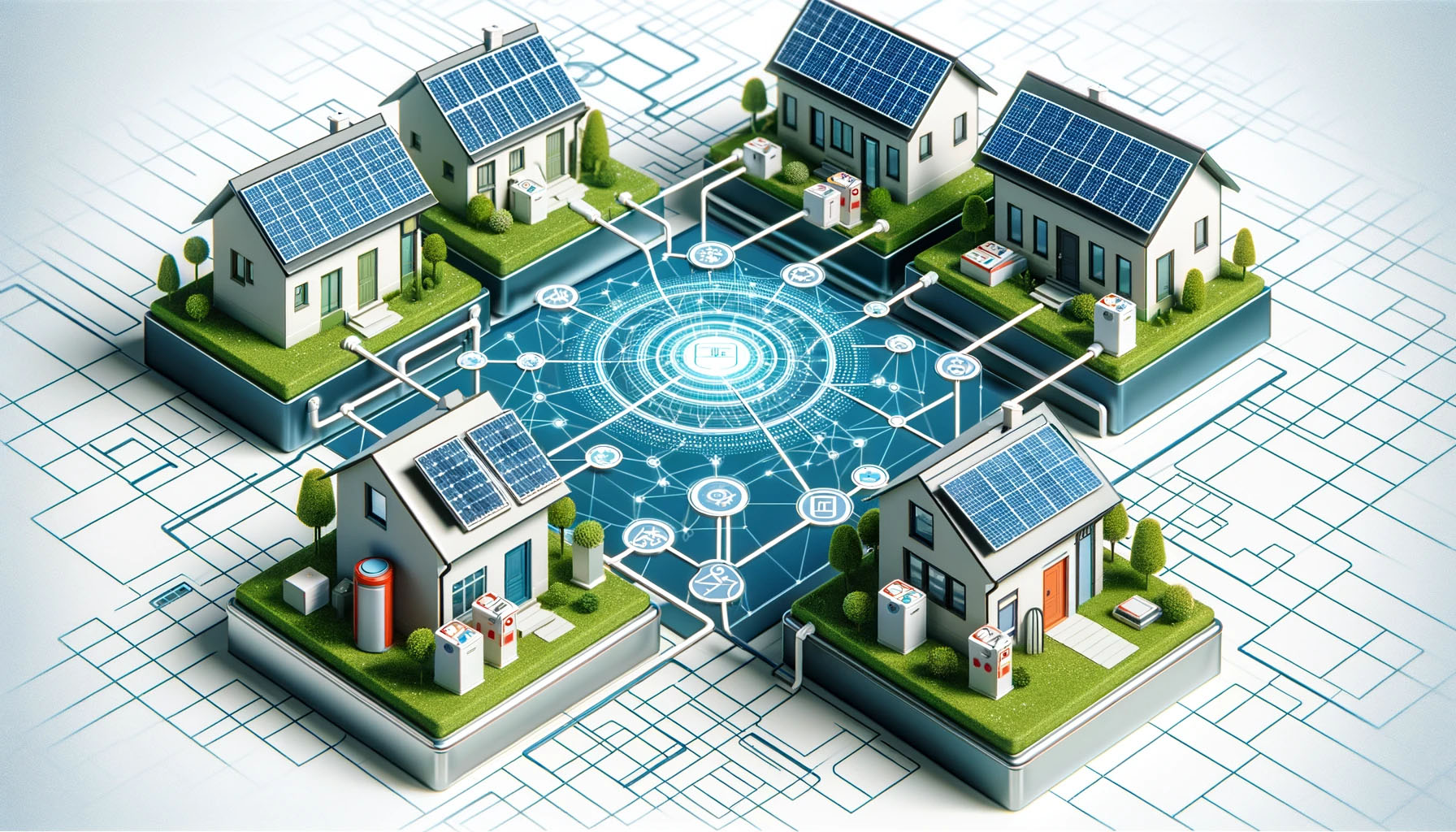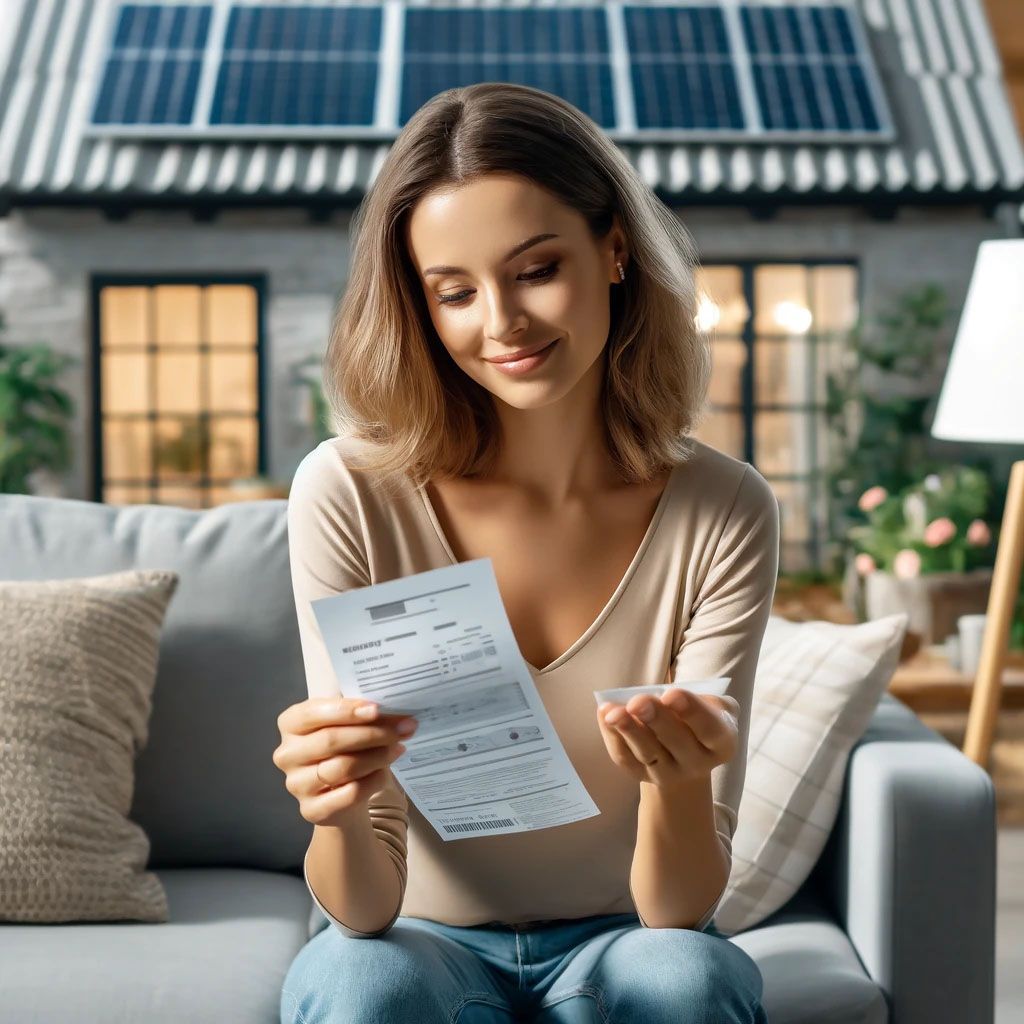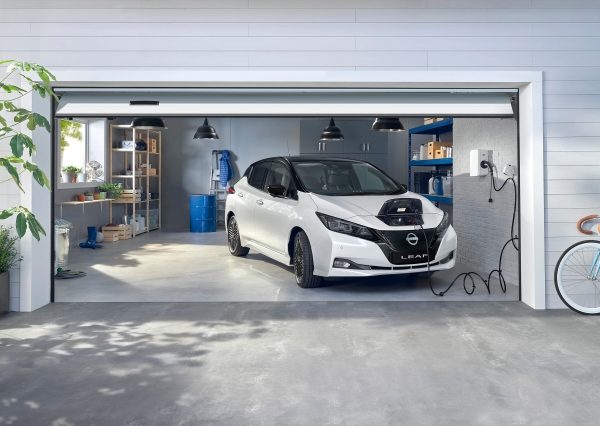- How Big Should Your Solar Battery and System Be?
- How solar battery storage works
- Introduction to solar battery storage
- Tesla Powerwall battery solutions
- What Do Solar Batteries Look Like – and Where Can I Install Them?
- What Size Solar System Should You Have When Adding a Battery
- What’s the Real ROI on Solar and Battery Systems in 2025?
- When are batteries worth it? Solar energy battery viability.
- Which Solar Battery Is Right for Your Home?
- Does Solar Increase Property Value in Shoalhaven? The Numbers Speak for Themselves
- Empowering Small Businesses with Solar: The Australian Small Business Energy Incentive
- How much will you save with solar?
- How the 2025 Australian Cheaper Home Batteries Program Works
- Solar finance options
- The 2024 NSW Government Home Solar Battery Rebate Scheme
- What government incentives and financing options are available for solar?

The 2024 NSW Government Home Solar Battery Rebate Scheme
In November 2024, the NSW Government introduced a rebate program. This program aims to assist homes and businesses in saving money on solar battery storage.
In 2025, the federal government’s Cheaper Home Batteries program offers a 30% discount on battery installations from July 1st. This makes combining solar and battery storage a smarter investment.
If you have rooftop solar panels, these battery schemes can save you money and make better use of your solar energy.
Shoalhaven Solar is here to help you navigate the process and make the most of the Federal and NSW Government solar battery incentives.
What is the NSW Government Rebate Scheme?
The NSW Government's rebate scheme is part of the wider Peak Demand Reduction Scheme that aims to encourage the installation of home solar batteries and their connection to Virtual Power Plants (VPPs).
By doing so, it hopes to make the electricity grid more reliable and reduce reliance on fossil fuels during peak demand times.
The goal is to cut NSW's emissions by 70% by 2035 and achieve net zero emissions by 2050.
How Can You Benefit from the Schemes?
 NSW Solar Battery Scheme
NSW Solar Battery Scheme
If you have an existing rooftop solar system, by taking advantage of the NSW solar battery scheme you could receive incentives of a rebate amount between $1600 and $2400 to cover the upfront installation costs of a new battery. The exact amount depends on the size of the battery you choose.
Additionally, you could earn between $250 and $400 for connecting your battery to a Virtual Power Plant (VPP), with this financial incentive available twice, at least three years apart.
For those without solar panels, the incentive can be included in the quote for a new solar and battery system.
This gives everyone the chance to join the movement towards a more sustainable energy future.
How the Federal 30% Battery Rebate Works
The federal Cheaper Home Batteries program:
Provides a further 30% discount at the time of installation
Applies to households, small businesses and community facilities
Works alongside existing state rebates
Was included in the 2024–25 federal budget with $2.3 billion in funding
Aims to get 1 million batteries into Aussie homes by 2030
This rebate is already factoring into quotes and installations — no more waiting.
If you're trying to work out the ROI of these schemes, read this article.
Why Should You Consider a Home Solar Battery?
Cost Savings: By storing excess solar energy, you can use it during peak times when electricity rates are higher. This reduces your electricity bills and increases your savings.
Energy Independence: With a home battery, you are less dependent on the grid. This is especially useful during power outages or peak demand times.
Environmental Impact: Using solar energy reduces your carbon footprint. By participating in this scheme, you contribute to creating a cleaner and greener environment while helping to reduce greenhouse gases.
Grid Stability: Connecting your battery to a VPP helps stabilise the grid by releasing stored energy during peak demand periods. This collective effort supports the overall electricity network.
Understanding Virtual Power Plants (VPP)
Virtual Power Plants (VPPs) are an innovative way to enhance the efficiency and reliability of our electricity grid.
A VPP connects multiple home batteries in an energy-sharing network, allowing households to derive more benefits from their solar panel and battery systems and drive down energy costs even further.

What is a Virtual Power Plant and How Does It Work?
A single rooftop solar system with a home battery cannot replace a power station on its own. However, when you combine the power of thousands, tens of thousands, or even millions of home batteries, you create a powerful network.
This network, known as a Virtual Power Plant, can provide a significant amount of energy to the grid.
In a VPP, many households with solar and battery installations are aggregated into a network that can function as a collective power source.
By doing so, VPPs can quickly inject renewable energy into the grid to address frequency and voltage imbalances, local disruptions, or other disturbances, ensuring the network remains stable.
Australia is a world leader in rooftop solar installations, with more than 2.5 million systems generating over 10 gigawatts (GW) of power.
Home battery-powered systems are rapidly gaining popularity, with over 73,000 systems now storing almost 1.1 GW of power. This collective energy capacity is substantial and can be used to support the grid.
How Can You Take Advantage of a VPP?
To participate in a VPP, you need to have solar panels and a battery installed. Once connected, your battery becomes part of a larger energy-sharing network.
This means your battery can store excess solar energy and release it during times of high demand, reducing your reliance on the grid and potentially lowering your energy bills.

Households that join a VPP are often rewarded through direct payments, bill credits, or other incentives. The specific benefits can vary depending on the VPP program you join.
These programs often include apps or web portals that allow participants to track their energy use and contributions to the VPP.
A Future Use For Electric Vehicles (EVs) as a Home Battery or for a VPP
While the initial emphasis has been on household solar batteries, the concept of a ‘virtual power plant’ (VPP) can actually encompass a variety of energy sources and generators and this is a new area to watch.
Electric vehicles (EVs) present a remarkable future opportunity in this context. For example, ACT energy provider ActewAGL is experimenting with using EVs to provide Frequency Control Ancillary Services (FCAS) to support the electricity grid.
Some EVs are equipped with vehicle-to-grid (V2G) technology. ActewAGL's project has involved 51 Nissan Leaf EVs, each equipped with a 40kWh battery, to deliver grid services.

These EVs charged with renewable energy, are connected to the grid about 70% of the time. They offer backup power, discharge electricity to the grid, and store excess renewable energy to help stabilise the network.
The potential of EVs in VPPs is immense. If all 19 million vehicles on Australian roads were electric, their collective energy storage capacity would be equivalent to nine Snowy 2.0 pumped hydro schemes!
This kind of usage of EVs for home power is coming in the not-too-distant future so watch this space. For now, it is worth noting that not all EV cars are capable of this kind of connection.
Only EVs equipped with CHAdeMO plugs can currently discharge energy back into the grid in this manner. This includes models such as the Nissan Leaf and Mitsubishi PHEVs.
But someday soon, vehicles using the CCS plug will be capable of it too and using your car to power your home will become commonplace.
Any EV used as a power source for your house or to plug into a VPP will require a bidirectional charger and these are quite expensive to buy in today’s market. But as with all things new, prices will come down in future when demand and supply are higher.
Benefits of Participating in a VPP
Reduced Energy Costs: By sharing energy with the VPP, you can receive compensation or lower your energy bills, reducing the payback time of your solar and battery systems.
Support for the Grid: Your participation helps stabilise the grid, especially during peak demand periods, making the entire electricity network more reliable.
Community and Environmental Impact: By joining a VPP, you contribute to a collective effort to reduce reliance on fossil fuels and lower carbon emissions, benefiting your community and the environment.
Preparing for the Rebate Scheme
While the incentives won’t be available until November 2024, it’s never too early to start preparing. Here’s what you can do:
Research: Learn about different battery options and decide which one suits your needs. Look for batteries with good warranties and high-efficiency ratings. Or talk to us about what size battery you could install with a system sized for your home.
Contact Approved Suppliers: Approved suppliers, also known as Accredited Certificate Providers (ACPs), are businesses accredited by the Scheme Administrator (IPART) to carry out installations. Shoalhaven Solar will be one of these suppliers.
Get Quotes: Different suppliers will offer various products and services. Get multiple quotes to find the best deal. Make sure to understand what is included in the quote, such as the cost of the battery and the installation. Remember, cheap is not always good in the Solar industry, poor quality installs have burned a lot of people. Shoalhaven Solar will only ever install a system using components with long warranties and a good reputation.
Stay Updated: Sign up for updates on the NSW Government’s website to receive the latest information about the rebate scheme and the list of approved suppliers.
Safety and Compliance
Installing a home solar battery is generally safe if all standards and regulations are followed. Approved suppliers under the PDRS have to meet strict safety requirements and undergo regular compliance checks. It’s important to choose a professional and licensed installer to ensure the safety and efficiency of your system.
Frequently Asked Questions
Who gets the incentive money? The incentive is usually provided as an upfront discount by the approved supplier that installs the battery or operates the VPP.
Why are incentives not available until November 2024? The time up until November allows the Scheme Administrator (IPART) to set up compliance processes, accredit suppliers, and train staff.
What is an approved supplier? Approved suppliers, or ACPs, are accredited by IPART to perform specific installations and upgrades under the PDRS.
Can I choose the battery I want to install? Yes, as long as the battery model is on the approved product list specified by the Scheme Administrator.
Is it safe to install a battery at home? Yes, provided all equipment and implementation requirements are met, and ongoing maintenance and monitoring are conducted.
Next Steps
Now is the perfect time to start considering your options. By preparing early, you can ensure you’re ready to take advantage of the incentives as soon as they become available.
Shoalhaven Solar is here to help you every step of the way, from selecting the right battery to ensuring a smooth installation process. Get in touch if you have questions or want to prepare for upgrading an existing system, or installing a scheme-compatible new one.
Together, we can make a significant impact on our environment and move towards a sustainable future.
Suggested Articles
- Does Solar Increase Property Value in Shoalhaven? The Numbers Speak for Themselves
- Empowering Small Businesses with Solar: The Australian Small Business Energy Incentive
- How much will you save with solar?
- How the 2025 Australian Cheaper Home Batteries Program Works
- Solar finance options
- What government incentives and financing options are available for solar?